
In a time of climate emergency, academic and professional associations recognize they can no longer continue business as usual. During the global pandemic, conference organizers have broken with old traditions and innovated new formats.
In Nature Human Behavior, Sarabipour et al. (2021) write: “Conferences are a pivotal part of the scientific enterprise, but large in-person meetings have several disadvantages. As the pandemic experience has shown, online meetings are a viable alternative. Accelerating efforts to improve conferences in virtual formats can lead to a more equitable and sustainable conference culture.”
Some conference attendees and stakeholders want a more satisfying in-person presence than purely virtual formats. As one option, the Multi-Site Low-Carbon Conference Hosting (MULCH) Project seeks to develop an ongoing university partnership for simultaneous in-person events distributed across several sites, linked together for a connected participant experience.
Examples of Multi-Site Conferences
Richard Parncutt et al. (2021) summarized opportunities for multi-hub academic conferences that are “global, inclusive, culturally diverse, creative, [and] sustainable.” Each site preserves the experience of an in-person event, but the sites are spaced geographically to facilitate overland transportation and require much less flying. Professor Parncutt and colleagues in the field of music and psychology demonstrated the feasibility of this format at the 15th biennial International Conference on Music Perception and Cognition (“ICMPC15/ESCOM10”), which had simultaneous sites in Montreal (Canada), La Plata (Argentina), Graz (Austria), and Sydney (Australia).
We piloted a hybrid conference at Tufts for the student-organized 16th annual Tufts Nutrition Data Symposium (TNDS), whose theme was “Sustainability Now: Action-Oriented Solutions for Food Systems, Nutrition, and Diet.” Tufts University (Boston) and the London School of Health and Tropical Medicine (London) hosted a viewing party for the keynote speaker, Dr. Catherine Nakalembe, followed by a social event afterwards so that students, staff, and faculty at both locations could engage with one another (pictures below). Two large TV monitors with speakers hooked up to Zoom allowed participants to interact across sites. In our pilot, the video connections worked better than the audio, and we are now experimenting with technical options for improving the audio in the future. Many conferences successfully broadcast keynote speeches. There are great opportunities for further innovations to improve the interactivity and interpersonal warmth of social events in multi-site conferences.
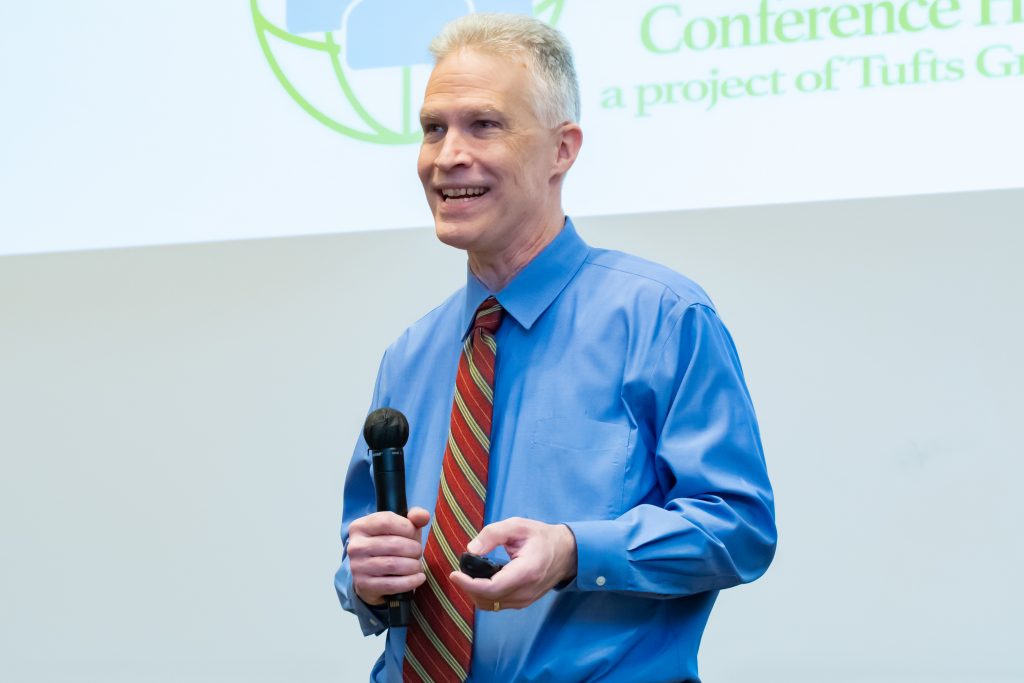
Parke Wilde introducing the flying less initiative. 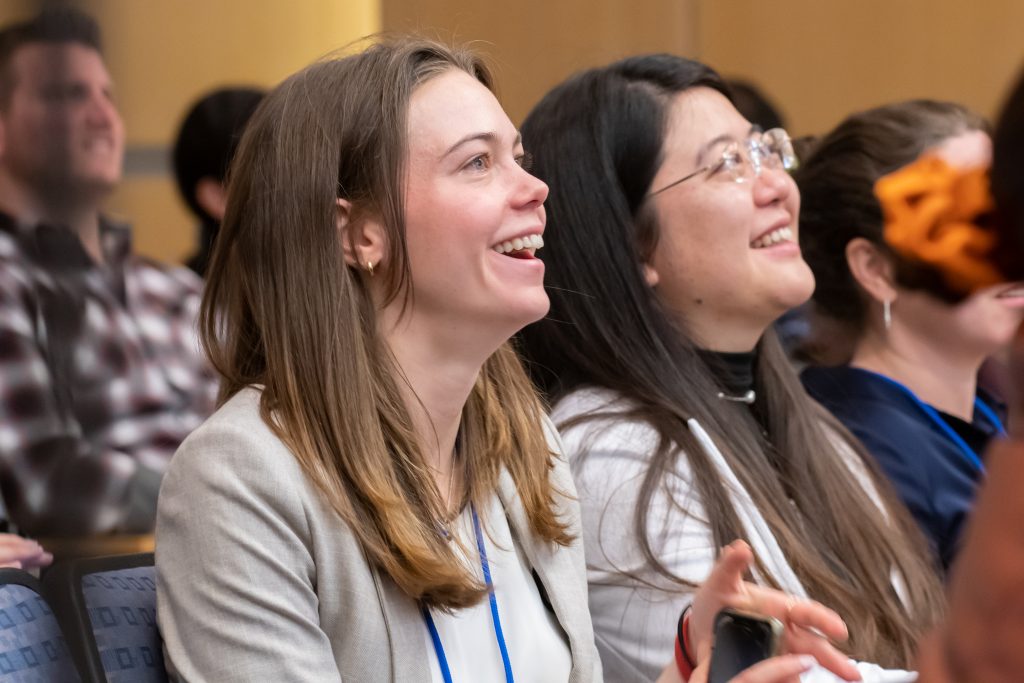
TNDS committee enjoying the presentation. 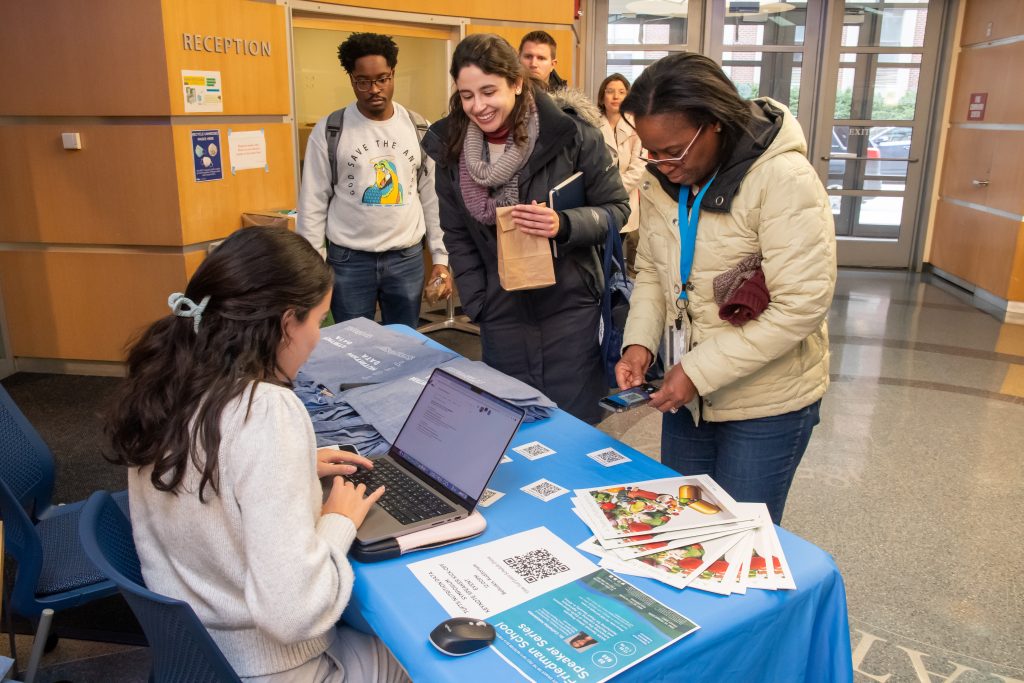
Check-in table at the Friedman School. 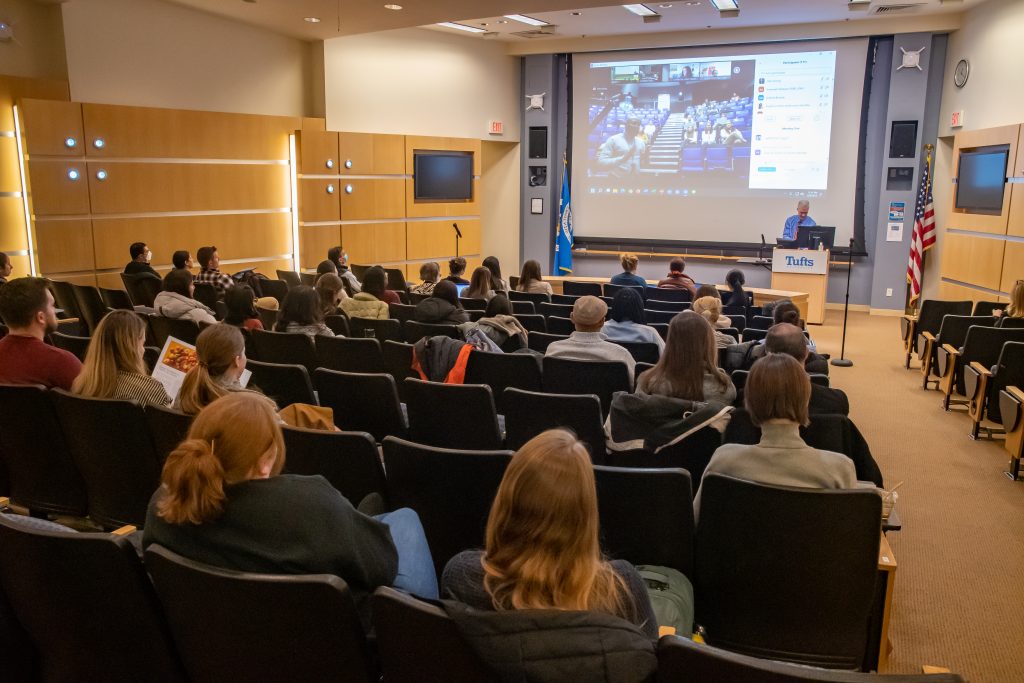
LSHTM virtual introduction via Zoom. 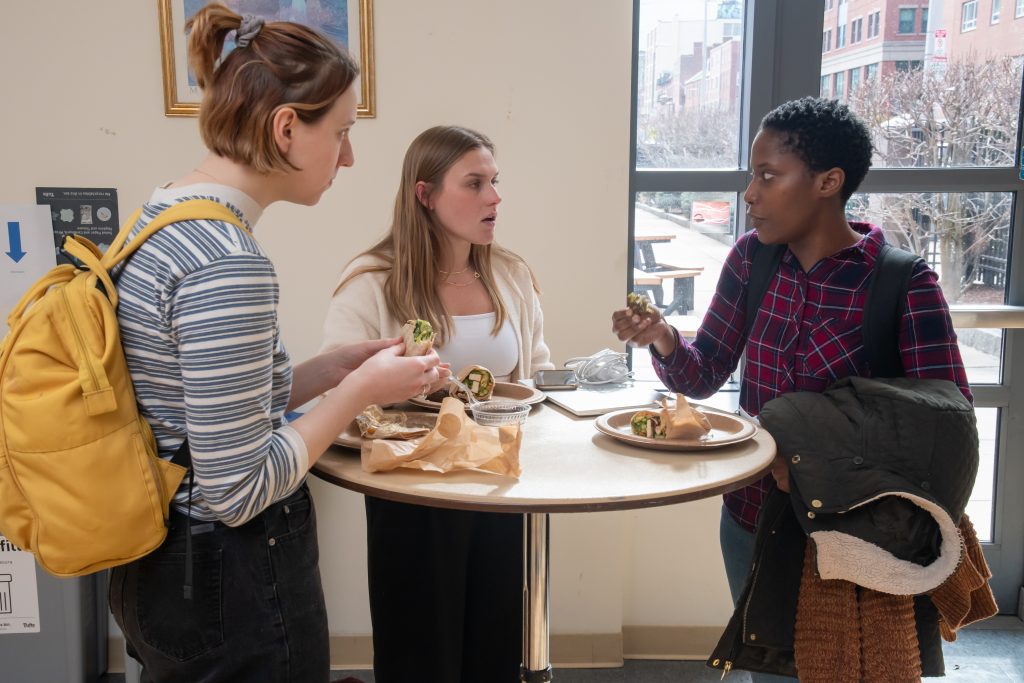
Tufts students enjoying the social event. 
Parke coordinating with the LSHTM hub.
